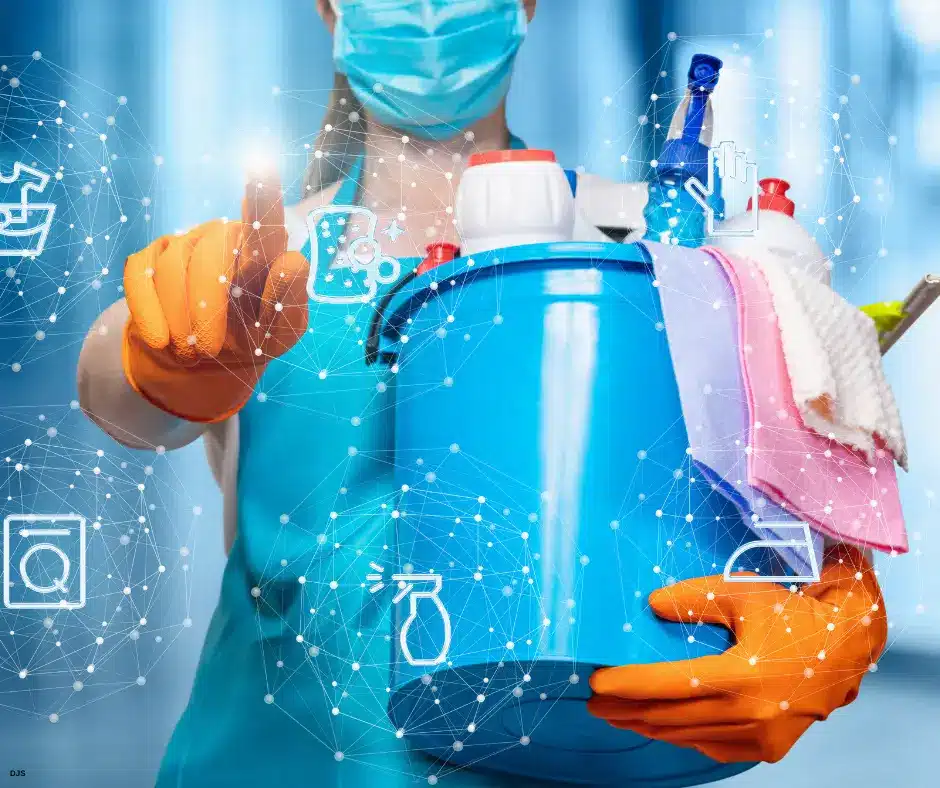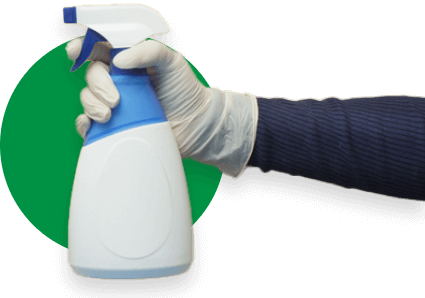Heat alcohol disinfects medical equipment, a method that eliminates harmful pathogens, preventing healthcare-associated infections affecting millions of patients globally. These proven sterilization and disinfection techniques use thermal energy and chemical agents to destroy bacteria, viruses, and other microorganisms on critical medical devices. Proper implementation of heat-alcohol disinfectant protocols for medical equipment ensures patient safety while maintaining regulatory compliance in healthcare facilities.
What Are Heat and Alcohol Medical Equipment Disinfection Methods?
Heat and alcohol represent two fundamental approaches to medical equipment decontamination, addressing different pathogen elimination needs. Heat-based sterilization methods use thermal energy to kill all microorganisms, including resistant bacterial spores. Alcohol-based disinfection employs chemical solutions that eliminate most bacteria and viruses from equipment surfaces. Healthcare facilities select appropriate methods based on equipment classification, contamination risk levels, and material compatibility.
Professional medical cleaning services implement these disinfection protocols in accordance with strict regulatory standards and manufacturer specifications. Heat sterilization typically occurs in specialized equipment, including autoclaves, dry heat sterilizers, and chemical vapor systems. Alcohol disinfection uses ethanol or isopropyl alcohol solutions applied by wiping, spraying, or immersion. Each method targets specific equipment categories defined by infection risk and patient contact levels.
Heat sterilization achieves complete microbial destruction by denaturing proteins and disrupting cellular membranes. Steam autoclaves operate at temperatures between 250 and 275°F under pressure, penetrating porous materials and equipment lumens. Dry heat sterilizers reach 302-356°F, treating moisture-sensitive items including glass and electronic components. These thermal processes provide verifiable sterility assurance through biological indicators and temperature monitoring.
Alcohol disinfection provides rapid pathogen reduction for non-critical equipment and environmental surfaces. Solutions containing 60-90% ethanol or isopropyl alcohol denature proteins and dissolve lipid membranes, destroying vegetative bacteria and enveloped viruses. The optimal concentration of 70% alcohol balances antimicrobial effectiveness with evaporation rates, ensuring adequate contact time. However, alcohol lacks sporicidal activity, making it unsuitable for critical instrument sterilization.
Why Heat and Alcohol Disinfection Methods Matter
Healthcare-associated infections affect approximately 1 in 31 hospital patients on any given day, according to CDC surveillance. Improperly disinfected medical equipment serves as a primary transmission vector for dangerous pathogens, including MRSA, C. difficile, and hepatitis viruses. Effective heat alcohol disinfection protocols prevent these preventable infections, protecting vulnerable patient populations.
Patient safety depends on selecting appropriate disinfection levels that match equipment use categories. Critical instruments penetrating sterile tissue or vascular systems require complete sterilization, eliminating all microbial life. Semi-critical devices that contact mucous membranes require high-level disinfection, removing all microorganisms except bacterial spores. Non-critical equipment that comes into contact with intact skin requires low-level disinfection to address vegetative bacteria and viruses.
Critical benefits of proper heat and alcohol disinfection include:
- Infection Prevention: Eliminates pathogenic microorganisms from medical devices, preventing cross-contamination between patients and reducing healthcare-associated infection rates by eliminating transmission vectors.
- Regulatory Compliance: Meets CDC guidelines, FDA requirements, and Joint Commission standards for medical equipment processing, ensuring facility accreditation and legal compliance.
- Patient Confidence: Demonstrates a visible commitment to safety through documented sterilization protocols, building trust with patients seeking healthcare services.
- Liability Protection: Reduces malpractice exposure from infection-related complications through proper equipment processing, documentation, and quality assurance programs.
- Cost Effectiveness: Prevents expensive outbreak investigations, extended patient stays, and additional treatments resulting from inadequate equipment disinfection practices.
These interconnected advantages demonstrate why heat alcohol disinfectant medical equipment protocols represent essential patient safety infrastructure rather than an optional enhancement.
The Spaulding Classification System
The Spaulding Classification system provides the foundational framework for selecting medical equipment disinfection levels. Initially developed in 1939 and widely adopted by 1957, this categorization system remains the standard approach for infection control professionals. The CDC defines it as a strategy for sterilization and disinfection based on infection risk associated with equipment use.
Spaulding Classification divides medical devices into three categories based on patient contact type and infection transmission risk. Critical items penetrate sterile tissue or enter the vascular system, requiring sterilization. Semi-critical devices that contact mucous membranes or non-intact skin require high-level disinfection. Non-critical equipment touches only the intact skin, needing low-level disinfection. This systematic approach ensures appropriate processing matching infection risk levels.
The following table illustrates Spaulding Classification categories and required processing methods:
| Category | Contact Level | Infection Risk | Processing Required | Examples |
| Critical | Penetrates tissue or vascular system | High | Sterilization (heat/chemical) | Surgical instruments, catheters, implants |
| Semi-Critical | Touches mucous membranes or non-intact skin | Moderate | High-level disinfection | Endoscopes, respiratory therapy equipment |
| Non-Critical | Contacts intact skin only | Low | Low-level disinfection | Blood pressure cuffs, stethoscopes, bedpans |
Professional medical cleaning services apply this classification system when developing equipment processing protocols, ensuring appropriate disinfection levels for each device category.
Understanding material compatibility prevents equipment damage during processing. Heat-sensitive plastics and electronics cannot withstand autoclave temperatures, so alternative sterilization methods are required. Some materials degrade from alcohol exposure, necessitating a different disinfectant selection. Proper classification considers both infection risk and material limitations, ensuring effective disinfection without equipment destruction.
Healthcare facilities must maintain comprehensive equipment inventories that document the Spaulding Classification for each device type. This documentation guides central sterile processing departments in selecting appropriate cleaning, disinfection, and sterilization protocols. Regular inventory reviews identify new equipment that requires the development of processing protocols and staff training.
How Heat and Alcohol Eliminate Pathogens
Heat and alcohol destroy microorganisms through distinct biological mechanisms targeting different cellular structures. Understanding these antimicrobial actions helps healthcare workers select appropriate methods and ensure proper application techniques.
Heat sterilization kills microorganisms through protein coagulation and denaturation, disrupting essential cellular functions. Thermal energy breaks hydrogen bonds, maintaining protein structure, causing enzymes and structural proteins to unfold permanently. This denaturation prevents proteins from performing metabolic processes, DNA replication, and membrane maintenance functions. Cell death occurs when critical proteins lose functionality beyond cellular repair capacity.
Moist heat penetrates materials more effectively than dry heat, transferring thermal energy through steam condensation. Steam at 250°F under 15 psi rapidly coagulates proteins, killing bacteria within 15-30 minutes. The moisture facilitates heat transfer into bacterial spores, where dry heat would require extended exposure times. This efficiency makes steam autoclaves the preferred sterilization method for heat-resistant instruments.
Alcohol solutions disrupt microbial cells through protein denaturation and lipid membrane dissolution. Ethanol and isopropyl alcohol penetrate cell walls, extract membrane lipids, and cause structural collapse. Simultaneously, alcohol denatures proteins, including enzymes critical for cellular metabolism and reproduction. This dual action rapidly kills vegetative bacteria, fungi, and enveloped viruses within seconds to minutes.
The 70% alcohol concentration proves most effective in balancing antimicrobial activity with evaporation rate. Pure alcohol evaporates too quickly, preventing adequate pathogen contact time. The water content in 70% solutions slows evaporation, allowing sustained contact while facilitating protein denaturation. Lower concentrations below 60% provide insufficient antimicrobial activity against resistant organisms.
Key antimicrobial mechanisms include:
- Protein Denaturation: Both heat and alcohol cause irreversible protein unfolding, destroying enzyme function and structural integrity essential for microbial survival.
- Membrane Disruption: Heat coagulates membrane proteins while alcohol dissolves lipid bilayers, causing cell contents to leak and preventing nutrient transport.
- Enzyme Inactivation: Thermal and chemical denaturation destroy metabolic enzymes, halting cellular respiration, reproduction, and repair processes.
- DNA Damage: Extreme heat breaks hydrogen bonds in the DNA double helix, while alcohol interferes with nucleic acid synthesis, preventing replication.
- Spore Destruction: High temperatures penetrate spore coats, denaturing core proteins that resist chemical disinfectants and lower heat levels.
These biological mechanisms explain why heat achieves sterilization while alcohol provides disinfection but not sporicidal activity.
Steam Sterilization Methods Using Autoclaves
Autoclaves are the most widely used sterilization method in healthcare facilities, combining heat, pressure, and moisture to destroy microorganisms reliably. Steam sterilization offers cost-effectiveness, material compatibility, and rapid cycle time, making it ideal for high-volume processing.
Gravity displacement autoclaves operate through simple steam injection, displacing air downward through chamber drains. Steam enters the chamber, pushing air out of the bottom outlet, creating ng a saturated-steam environment. These basic units cost less but require longer cycle times, ensuring complete air removal. Gravity displacement is suitable for unwrapped instruments, glassware, and non-porous items where air pockets don’t form in complex configurations.
Pre-vacuum autoclaves actively remove air before steam injection, ensuring thorough steam penetration. Vacuum pumps extract air from the chamber, creating negative pressure. Steam then rapidly fills the evacuated space, penetrating porous materials, wrapped instrument packs, and device lumens. Pre-vacuum cycles complete faster than gravity displacement, making them preferred for wrapped surgical instrument sets.
The following table compares autoclave types and operating parameters:
| Autoclave Type | Temperature | Pressure | Cycle Time | Best Applications |
| Gravity Displacement | 250-254°F | 15-17 psi | 30-60 minutes | Unwrapped instruments, glassware, simple items |
| Pre-Vacuum | 270-275°F | 27-30 psi | 4-15 minutes | Wrapped packs, porous materials, complex devices |
| Flash Sterilization | 270-275°F | 27-30 psi | 3-10 minutes | Emergency unwrapped instruments, immediate use only |
Professional medical cleaning services select appropriate autoclave configurations based on facility processing volumes and the types of instruments requiring sterilization.
Biological indicators provide sterilization verification using highly resistant bacterial spores. Geobacillus stearothermophilus spores survive improper sterilization conditions, indicating process failures. Positive indicator results require immediate inspection of the equipment, load recall, and reprocessing before returning the instruments to service. Regular biological monitoring ensures consistent sterilization performance, protecting patient safety.
Chemical indicators change color during exposure to sterilization conditions, providing immediate process verification. External indicators on packs show exposure occurred while internal indicators confirm conditions reached inside wrapped items. However, chemical indicators detect only physical parameters, not actual microbial destruction, requiring biological indicator confirmation.
Alcohol-Based Disinfection Applications
Alcohol disinfection provides rapid, convenient pathogen reduction for non-critical medical equipment and environmental surfaces. Ethanol and isopropyl alcohol solutions offer broad-spectrum antimicrobial activity against bacteria, fungi, and many viruses, making them versatile disinfectants.
Alcohol-impregnated wipes deliver the most convenient application method for routine equipment disinfection. Pre-saturated wipes containing 70% ethanol or isopropyl alcohol combine cleaning and disinfection in a single-step application. These disposable products ensure consistent alcohol concentration, preventing dilution errors. Wipes prove ideal for small equipment, including stethoscopes, blood pressure cuffs, thermometers, and patient monitoring devices.
Proper alcohol disinfection protocols require:
- Surface Preparation: Clean visible soil with detergent and water before alcohol application, as organic matter interferes with antimicrobial activity and can shield microorganisms.
- Adequate Contact Time: Maintain wet surface contact for 30 seconds minimum, allowing alcohol penetration and protein denaturation, extending to 10 minutes for enhanced effectiveness.
- Complete Coverage: Wipe all equipment surfaces systematically, ensuring alcohol contacts the entire device, including handles, cables, buttons, and display screens.
- Material Compatibility: Verify alcohol tolerance before use, as repeated exposure damages some plastics, rubber components, and electronic device coatings.
- Proper Ventilation: Ensure adequate airflow, as alcohol vapors pose fire hazards and can cause respiratory irritation in confined spaces with poor ventilation.
- Surface Drying: Allow complete alcohol evaporation before patient contact, as residual alcohol may cause skin irritation or interfere with the adhesion of medical devices.
These systematic application protocols maximize disinfection effectiveness while preventing equipment damage and safety hazards.
Alcohol spray solutions offer an alternative for larger surfaces or equipment that require complete coverage. Healthcare workers spray 70% alcohol directly onto environmental surfaces, including bedrails, overbed tables, and IV poles. Spray application ensures uniform distribution across large areas compared to wipe methods. However, spray creates greater vapor exposure, requiring enhanced ventilation and fire safety precautions.
Immersion disinfection is appropriate for small instruments that tolerate liquid exposure. Medical devices are entirely submerged in a 70% alcohol solution for 10-30 minutes, ensuring all surfaces are in contact with the disinfectant. Immersion addresses complex instruments with crevices and lumens that are difficult to clean thoroughly with wipes. Items must dry completely after removal to prevent alcohol skin contact and fire risks.
Alcohol limitations require understanding for safe and effective use. Alcohol evaporates rapidly,y reducing contact time on vertical surfaces and porous materials. It lacks activity against bacterial spores, making it unsuitable for sterilizing critical equipment. Repeated alcohol exposure hardens rubber components and cracks some plastic materials. These limitations explain why alcohol serves as a low-level disinfectant rather than a sterilization method.

Alternative Heat Sterilization Methods
Beyond steam autoclaves, specialized heat sterilization methods address equipment that is incompatible with moisture or that requires different processing conditions. These alternatives expand sterilization capabilities for diverse medical device materials.
Dry heat sterilization uses hot air ovens, eliminating moisture damage to sensitive instruments. Glass syringes, petroleum-based products, and powder medications tolerate dry heat but degrade in steam. Metal instruments prone to corrosion from moisture also benefit from dry heat processing. Operating temperatures reach 320-356°F for 1-2 hours, achieving complete microbial destruction, including resistant bacterial spores.
Dry heat requires significantly longer exposure times compared to steam sterilization. Heat transfer through air is slower than through steam, requiring longer cycles. The lack of moisture prevents rapid protein coagulation, necessitating higher temperatures for equivalent lethality. These extended cycles limit dry heat to specialty applications where steam proves incompatible.
Chemical vapor sterilization employs formaldehyde or ethylene oxide combined with heat under pressure. Unsaturated chemical vapor systems heat formaldehyde to 270°F with minimal moisture, preventing instrument corrosion. This method sterilizes carbon steel instruments, burs, and handpieces damaged by steam moisture. However, formaldehyde toxicity and ventilation requirements limit widespread adoption compared to steam autoclaves.
Ethylene oxide gas sterilization is used to sterilize heat-sensitive devices, including plastics, electronics, and optical equipment. Low-temperature processing at 85-145°F prevents thermal damage while ethylene oxide alkylates proteins and DNA, killing all microorganisms. Long cycle times of 12-24 hours, plus aeration periods that remove toxic residues, make this method suitable only for items incompatible with other sterilization processes.
Alternative sterilization method comparison:
- Dry Heat: Best for moisture-sensitive items, glassware, powders requiring 1-2 hours at 320-356°F with no corrosion risk but extended processing times.
- Chemical Vapor: Prevents instrument corrosion with formaldehyde at 270° F, requiring specialized ventilation and handling protocols for toxic chemical exposure.
- Ethylene Oxide: Sterilizes heat-sensitive plastics and electronics at low temperatures but demands 24+ hour cycles including aeration and strict safety controls.
- Hydrogen Peroxide Plasma: Low-temperature processing compatible with most materials, completing cycles in 45-75 minutes without toxic residues or aeration requirements.
These alternative methods expand sterilization capabilities beyond steam autoclaves, addressing diverse medical equipment and material requirements.
Medical Equipment Contamination Management
Comprehensive contamination management systems organize medical equipment processing from the point of use through sterilization and redistribution. Centralized processing departments implement standardized protocols, ensuring consistent quality and regulatory compliance.
Central sterile processing departments function as the hospital’s core infrastructure, managing all reusable medical equipment. These specialized units employ trained sterile processing technicians certified in decontamination, sterilization, and quality assurance procedures. Departmental workflow follows unidirectional patterns, preventing cross-contamination between dirty and clean processing areas.
Contaminated equipment transport requires proper containment, preventing environmental contamination and staff exposure. Closed containers with biohazard labeling transport used instruments from patient care areas to decontamination zones. Point-of-use treatment, including gross soil removal and moisture retention, prevents debris from drying, which complicates subsequent cleaning. Transport containers undergo disinfection after each use, preventing secondary contamination.
Essential contamination management steps include:
- Point-of-Use Preparation: Rinse instruments immediately, removing gross blood and debris before proteins dry and bond permanently to metal surfaces.
- Containment Transport: Place contaminated instruments in closed, leakproof containers to prevent spills and aerosol generation during movement through facility corridors.
- Manual Cleaning: Scrub instruments thoroughly using enzymatic detergents and brushes, removing bioburden before automated washing or sterilization processes.
- Mechanical Washing: Process instruments through an automated washer, providing standardized cleaning cycles with temperature and detergent verification for consistent results.
- Inspection: Examine cleaned instruments under magnification, checking for residual soil, damage, and functionality before packaging and sterilization.
- Packaging: Wrap instruments in appropriate materials that allow steam penetration while maintaining sterility after processing until the point of use.
These systematic processes ensure proper decontamination before heat-alcohol disinfection protocols achieve effective sterilization.
Personal protective equipment protects sterile processing technicians from bloodborne pathogen exposure and chemical hazards. Heavy-duty gloves, fluid-resistant gowns, face shields, and masks prevent contact with contaminated instruments during cleaning procedures. Proper PPE donning and doffing techniques prevent self-contamination when transitioning between processing zones.
Quality assurance programs verify consistent sterilization performance through biological monitoring, chemical indicators, and mechanical parameter recording. Monthly biological indicator testing confirms autoclave functionality using resistant spore strips. Daily chemical indicator verification provides immediate feedback on temperature and pressure achievement. Continuous temperature chart recording documents every sterilization cycle, creating audit trails for accreditation reviews.
Variation by Facility Type
Heat alcohol disinfect medical equipment protocols adapt to different healthcare facility types,s addressing unique operational characteristics and equipment inventories. Understanding these variations ensures appropriate disinfection strategies for diverse care settings.
Acute Care Hospitals: Maintain extensive central sterile processing departments handling high volumes of reusable surgical instruments and patient care equipment. Operating room instrument sets require steam autoclave sterilization between procedures, demanding rapid turnaround capabilities. Medical-surgical units use alcohol disinfection for non-critical monitoring equipment,t including blood pressure cuffs and pulse oximeters. Intensive care units implement enhanced disinfection protocols for ventilators and invasive monitoring devices, preventing healthcare-associated pneumonia and bloodstream infections.
Surgical Centers: Focus primarily on steam sterilization for surgical instrument sets with limited non-critical equipment processing. Dedicated autoclave capacity ensures adequate sterility for scheduled procedures without delays. Flash sterilization capability addresses dropped instruments or emergency additions to surgical sets. Alcohol wipes disinfect anesthesia equipment, patient monitoring devices, and environmental surfaces between surgical cases.
Dental Clinics: Implement heat sterilization for all instruments contacting patient oral tissues, including examination instruments, extraction forceps, and handpieces. Small autoclaves accommodate dental instrument volumes with rapid cycle times supporting appointment schedules. Alcohol disinfection addresses operatory surfaces, light handles, and chair controls between patient appointments—dry-heat sterilizers process instruments damaged by moisture, including certain burs and cutting instruments.
Outpatient Clinics: Rely heavily on alcohol disinfection for examination room equipment with limited reusable instrument inventories. Stethoscopes, otoscopes, ophthalmoscopes, and blood pressure equipment receive alcohol wipe disinfection between patients. Small tabletop autoclaves sterilize minor procedure instruments when needed. Environmental surface disinfection using alcohol or quaternary ammonium compounds maintains examination room cleanliness.
Long-Term Care Facilities: Use primarily alcohol-based disinfection for resident care equipment with minimal sterilization requirements. Blood glucose monitors, thermometers, and stethoscopes receive alcohol disinfection between resident uses. Contracted sterile processing services handle occasional surgical instrument needs. The focus is on environmental surface disinfection to prevent pathogen transmission in residential care settings.
Each healthcare setting customizes heat alcohol disinfectant protocols for medical equipment, matching operational demands, equipment types, and patient population vulnerability levels.
Get Professional Medical Equipment Disinfection Services from Dallas Janitorial Services
Heat alcohol disinfects medical equipment methods protect patients from healthcare-associated infections through proven sterilization and disinfection protocols. Proper implementation prevents the millions of global infections caused by inadequate equipment processing while ensuring regulatory compliance. Dallas Janitorial Services brings over 15 years of medical facility expertise to Dallas-Fort Worth healthcare providers. Contact us today at 214-778-3689 for customized medical equipment disinfection assessment and service planning.
Frequently Asked Questions About Heat and Alcohol Medical Equipment Disinfection
Why is 70% alcohol concentration used for medical equipment disinfection?
The 70% alcohol concentration optimizes antimicrobial effectiveness by balancing pathogen destruction with evaporation rate. Pure alcohol evaporates too rapidly, preventing adequate surface contact time for protein denaturation. The 30% water content slows evaporation, allowing sustained contact while facilitating alcohol penetration into microbial cells. This concentration proves most effective against vegetative bacteria, fungi, and enveloped viruses on non-critical medical equipment.
What kills bacteria more effectively, heat or alcohol disinfection?
Heat sterilization eliminates all microorganisms, including resistant bacterial spores, while alcohol disinfection kills only vegetative bacteria and some viruses. Steam autoclaves achieve complete sterility through protein coagulation at 250-275°F under pressure. Alcohol solutions provide rapid disinfection but lack sporicidal activity, making them unsuitable for critical instrument sterilization. Equipment classification determines appropriate method selection based on infection risk levels.
How do hospitals manage heat and alcohol medical equipment disinfection?
Hospitals operate central sterile processing departments implementing standardized decontamination, sterilization, and quality assurance protocols. Critical instruments undergo steam autoclave sterilization while semi-critical devices receive high-level disinfection. Non-critical equipment uses alcohol-based disinfection between patient uses. Trained sterile processing technicians follow Spaulding Classification guidelines, ensuring appropriate processing levels for each equipment category.
Can alcohol disinfection replace heat sterilization for medical instruments?
Alcohol cannot replace heat sterilization for critical or semi-critical medical instruments due to a lack of sporicidal activity. Critical devices penetrating tissue or vascular systems require complete sterilization, eliminating all microbial life, including bacterial spores. Alcohol serves only as a low-level disinfectant, appropriate for non-critical equipment contacting intact skin. Heat sterilization remains essential for surgical instruments, implants, and devices entering sterile body areas.
What temperature do autoclaves use to sterilize medical equipment with heat?
Gravity displacement autoclaves operate at 250-254°F with 15-17 psi pressure for 30-60 minute cycles. Pre-vacuum autoclaves use 270-275°F at 27-30 psi to complete sterilization in 4-15 minutes. These temperatures achieve complete microbial destruction, including resistant bacterial spores, through protein coagulation and denaturation. Temperature monitoring and biological indicators verify proper sterilization conditions, protecting patient safety.







